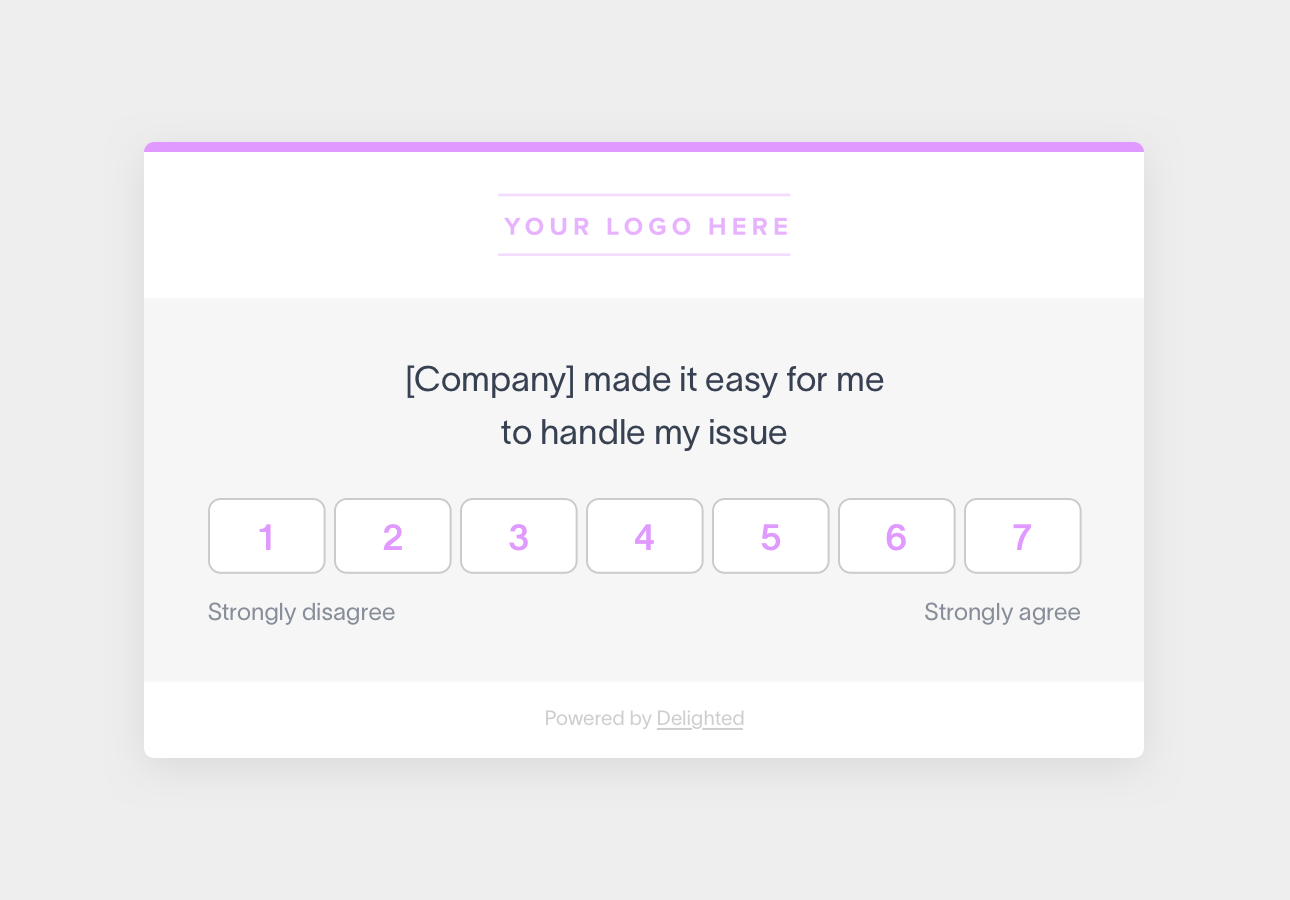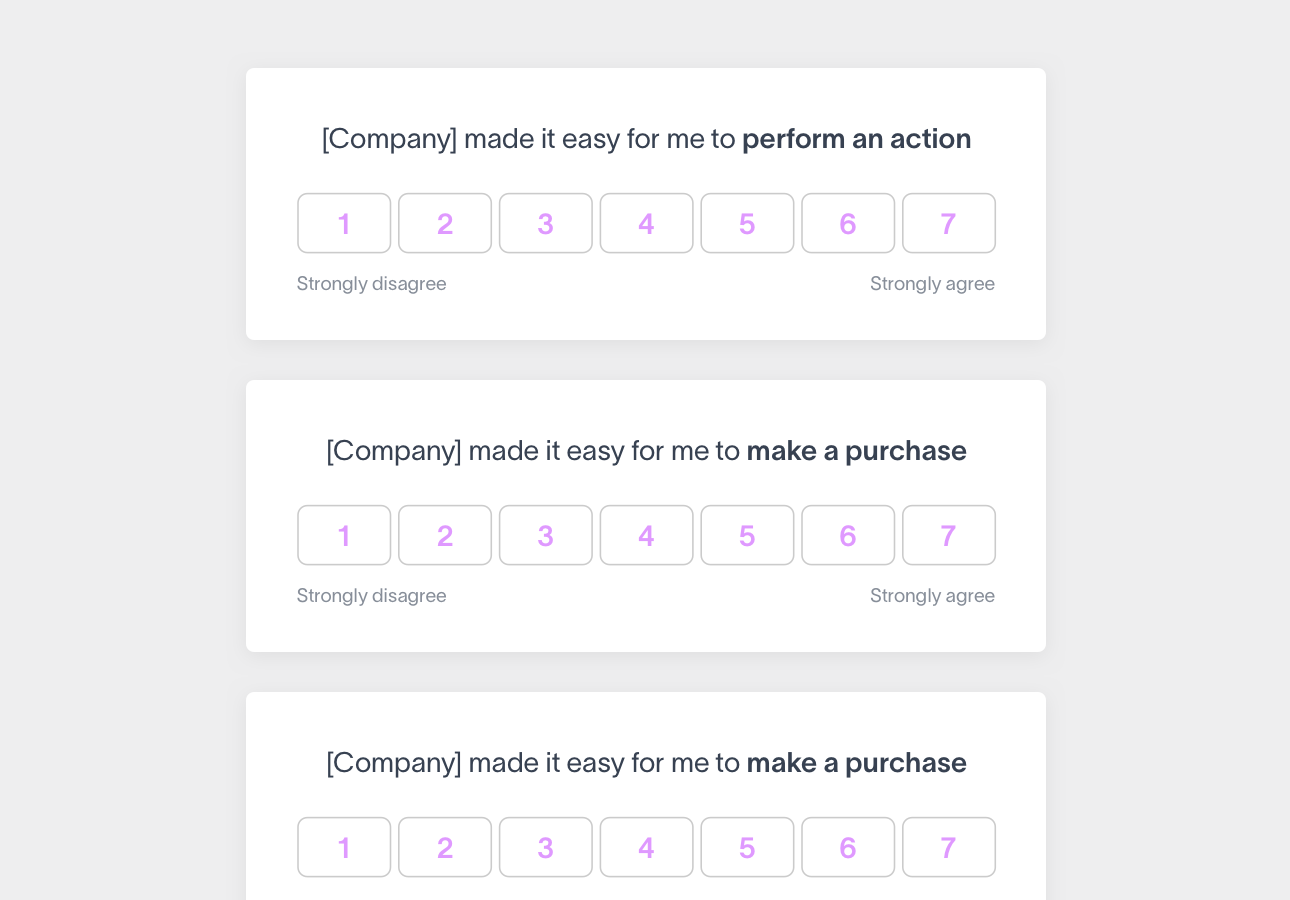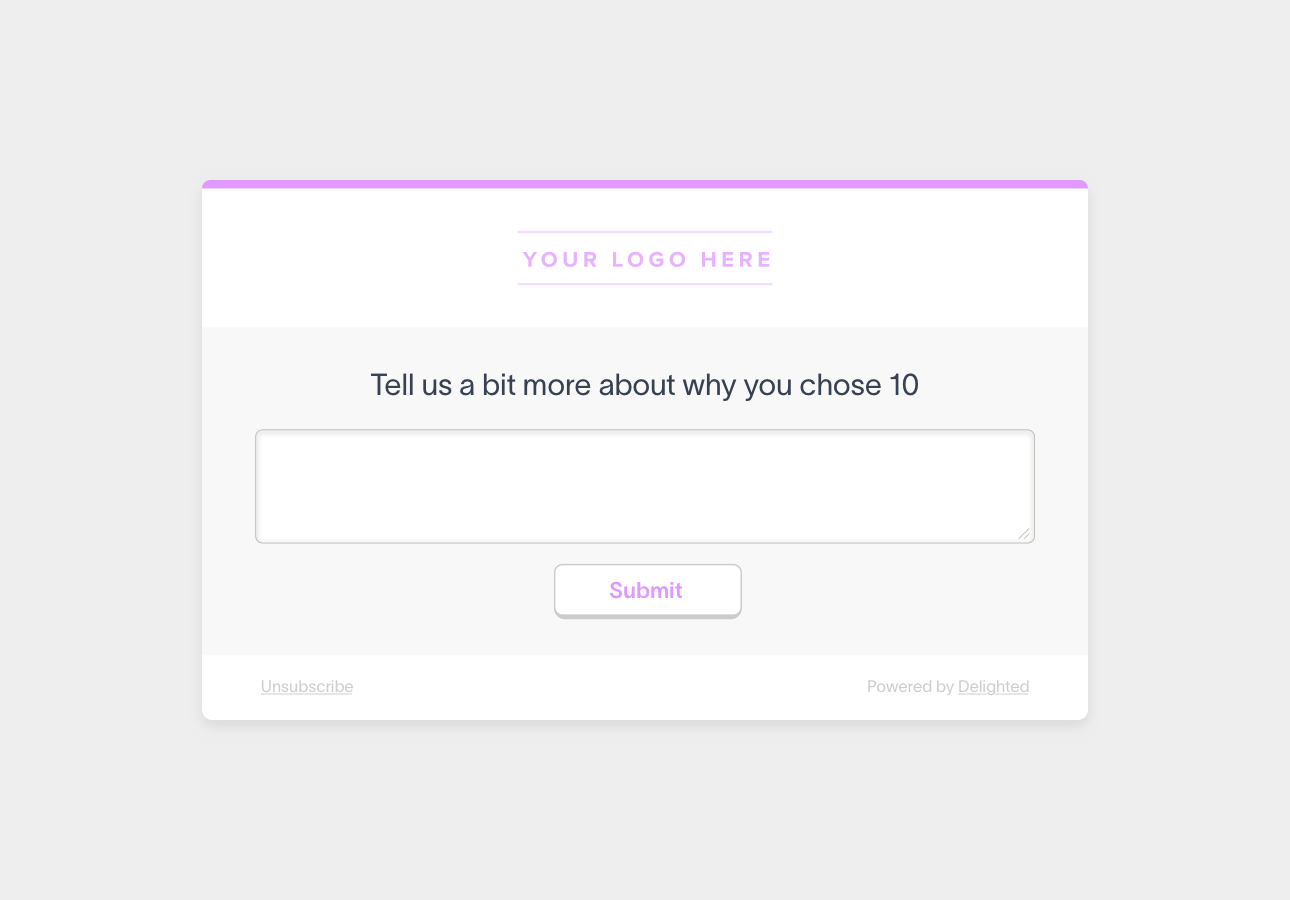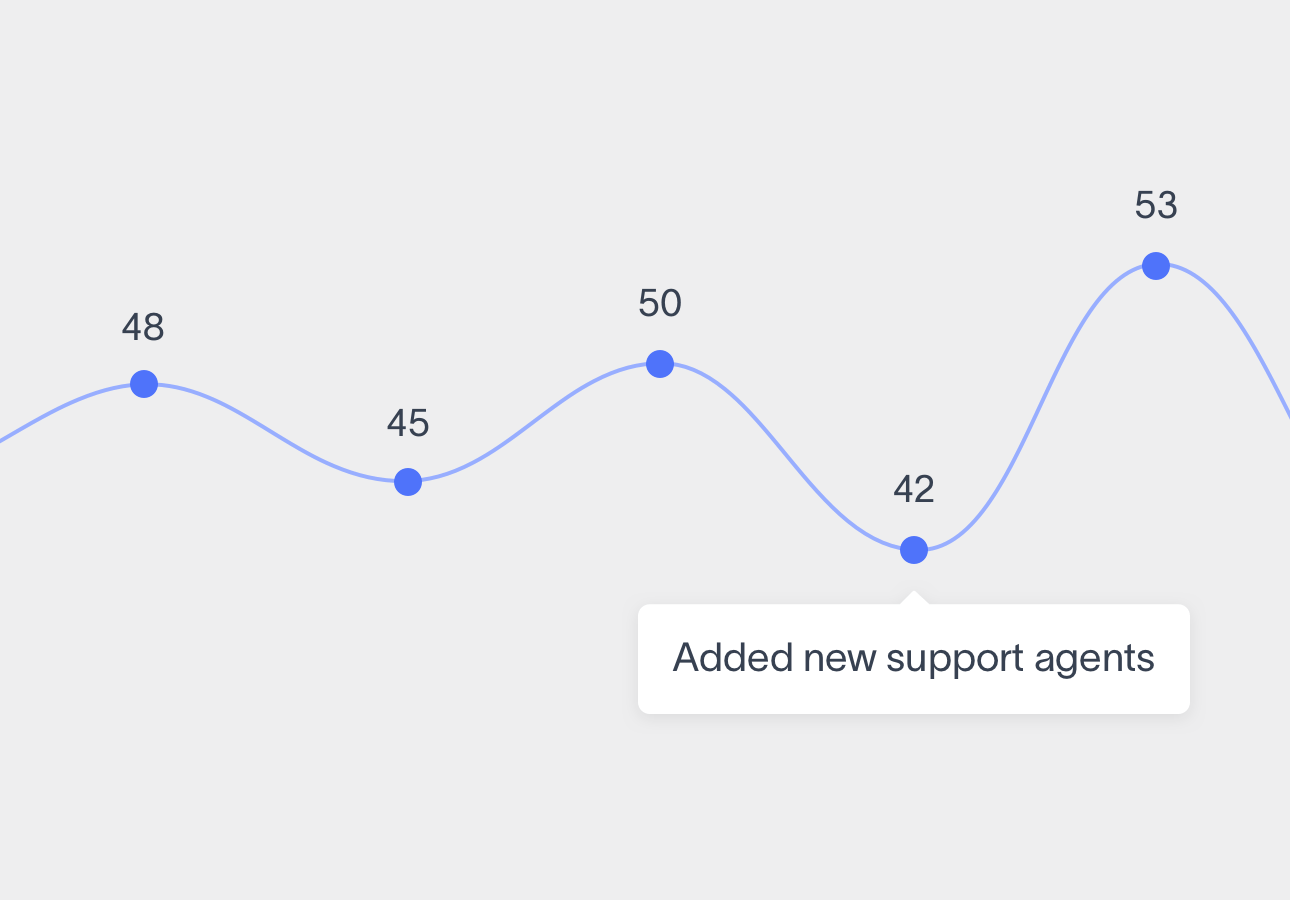Customer Effort Score (CES) is a customer experience metric that measures the ease with which customers can use your product or service, resolve a support issue, or find the information they need. Customers rate their effort on a 1-7 rating scale with a CES survey.

To truly understand “what is CES?”, it’s a good idea to read about how these scores work and learn the ways in which they improve customer loyalty and retention. This Customer Effort Score guide walks through the fundamentals and best practices of building a CES program.
Join 75,000+ of the world's most beloved brands
The standard CES survey template has been carefully calibrated for maximum effectiveness. Here’s a breakdown of how each part of the CES questionnaire works, and some survey design best practices to keep in mind.
To understand whether you’re decreasing customer effort, you first need to measure it. The CES survey question, “[Company] made it easy for me to handle my issue,” with a disagree-agree Likert scale from 1-7, provides a Customer Effort Score benchmark that you can track over time.

Commonly used to gain real-time feedback on customer service solutions, CES can also evaluate any interaction where friction may lead to a negative experience. Popular times to use CES also include after a customer purchases a product or service and throughout the onboarding experience.

Though “effort” is in the name of the score, it isn’t actually the best way to phrase the question. “Effort” doesn’t translate well for international surveys and can be misinterpreted. Instead, a universally understood word like “easy” is ideal. Delighted has CES question templates in 30+ languages for global businesses.

Allow the customer to explain where the struggle was, as opposed to giving them a list of options to choose from. The open comment form is the most powerful part of the CES survey template, since it surfaces areas you may not have considered, and tells you where to focus.

Brief is best when it comes to CES surveys. However, optional additional questions around common factors that impact the service experience, such as how knowledgeable the representative was, can be illuminating. Add up to 10 follow-up questions with Delighted, so you can still keep your survey short while getting deeper insights.

Pair Customer Effort Score with NPS® or CSAT surveys for a more holistic perspective on your customer’s experience.

Customer Effort Score ranges from 0-100. Your CES is the total number of customers who agree that their interaction was easy divided by the total number of responses. For example, if 65 customers out of 100 rated you 5, 6, or 7 on the 7-point scale, your CES would be 65.
Monitoring your CES over time will let you know how effective your feature or internal process changes are. Dips in the score will help you get in front of unexpected issues before they get out of control and lead to disloyal customers.

Delighted helps some of the world’s most coveted brands gather actionable customer feedback and make customer satisfaction a competitive advantage.



Sign up now and discover your Customer Effort Score for free.